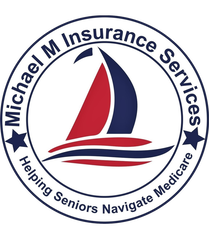Some expenses feel justifiable — a good pair of shoes, a reliable car, a cup of coffee that
doesn’t taste like regret. But what about the things we pay for month after month, year after
year… without giving them much thought?
If you’ve been on a Medicare Supplement (Medigap) plan for a while, it may be time to quietly
— and calmly — re-evaluate what you’re getting for what you’re paying.
Let’s walk through it together.
The Rising Cost of Peace of Mind
Medicare Supplement plans offer a certain kind of simplicity. No networks. No referrals. You can
go to just about any doctor or hospital that accepts Medicare.
It’s dependable coverage — and for many, that peace of mind is priceless.
But in 2026, many Supplement plans are facing double-digit premium increases. That means
if you’re already paying $200–$300 per month, those costs could climb higher — even if nothing
about your health or routine has changed.
You may not notice it all at once. But over time, it adds up.
What Are You Really Paying For?
Let’s say you’ve done everything right:
- You chose a trusted insurer
- You picked a plan with strong coverage
- You even shopped around for the lowest premium when you first enrolled
And yet… you find yourself wondering if your current plan still fits your needs — or your budget.
It’s a fair question.
Life changes. Health needs shift. And while it’s comforting to know your coverage is there for
you, it’s worth considering whether your plan still aligns with how you actually use it.
Sometimes the most thoughtful thing you can do is quietly ask:
“Is this still the right plan for me?”
Option 1: High Deductible Plan G (HDG)
If you like the open access and freedom of your Supplement plan, but would rather not pay a
large premium month after month, High Deductible Plan G might be worth exploring.
Here’s how it works:
- Much lower monthly premium (often around $50–$70)
- You pay for Medicare-approved services until you meet the deductible (about $2,800
in 2026) - After that, the plan covers just like traditional Plan G
For many, it’s a practical option. You still keep access to any Medicare provider, but you lower your monthly cost — and only pay more if you actually use care.
It’s not about downgrading your protection — it’s about realigning your plan with how you live.
Option 2: Medicare Advantage (Part C)
Another option to consider is Medicare Advantage. These plans are offered by private
insurance companies and typically combine your medical and drug coverage into one plan.
Many come with:
- $0 or low monthly premiums
- Built-in Part D drug coverage
- Extras like dental, vision, hearing, and gym memberships
Yes, they do operate differently:
- Most are tied to a network (HMO or PPO).
- You’ll have set copays for services.
- You may need referrals for specialists.
But for those who value additional benefits and aren’t looking for frequent medical care, Advantage plans can offer great value with lower monthly costs.
Can You Change Plans?
Depending on where you live, the answer might be yes — and more easily than you think.
States with More Flexibility:
- New York and Connecticut allow you to change Medigap plans at any time (no health questions).
- California and Oregon offer a birthday rule — you can switch plans during a window around your birthday.
- Missouri has an anniversary rule for plan changes.
In these states, you can adjust your plan as your needs evolve, without worrying about being
turned down due to health conditions — giving you options today, and again in the future if
things change.
Even in states without these rules, there are certain times you may qualify to switch (like moving or losing other coverage). It’s always worth checking.
A Gentle Nudge
This isn’t about urgency. It’s not a warning siren or a blinking red light.
It’s just a reminder that Medicare isn’t a “set it and forget it” decision — especially when premiums are climbing.
Sometimes, what made perfect sense at 65 might deserve a second look at 68 or 70. Not
because you chose wrong — but because life, health, and finances naturally shift over time.
And if you’re noticing that your plan feels a bit heavier than it used to, it’s okay to ask whether it still fits as comfortably as it once did.
What You Can Do (Quietly and Thoughtfully)
- Take a look at your current premium
- Reflect on how often you’ve used your coverage recently
- See if there are other plans that might suit your needs today
- If you live in a flexible state, explore your options
- Talk with a trusted advisor — someone who knows the rules and can help you compare
without pressure
Final Thoughts
You’ve worked hard to get to this stage in life. You deserve health coverage that feels like it’s
working with you — not draining your wallet while sitting quietly in your drawer.
Whether you stick with your current plan, consider a high-deductible option, or explore Medicare Advantage, the goal isn’t to start over — it’s to fine-tune what you already have.
Sometimes, just asking the question is the first step toward a better fit.
I want a Supplement Plan but I can afford the monthly payment.
Consider a Medicare advantage Plan or a High deductible Supplement.
Can I change my Supplement Plan at any time?
Y/N it depends upon the state you live in. Some states have guaranteed issue rule so Yes if
you live in one, No if your state requires Medical Underwriting.
What if I want to drop my Supplement and get a Medicare Advantage Plan?
You can only do that during a Medicare Enrollment Period.

